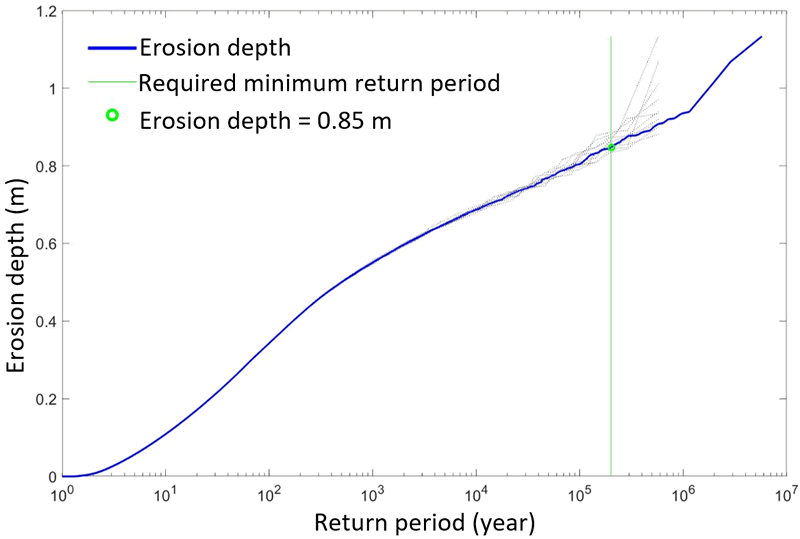V.M. van Bergeijk1*, S.A.A. Zwanenburg1
1 Dept. Coastal Structures & Waves, Deltares, Delft, The Netherlands
*corresponding author:
Introduction
The demonstration project Brede Groene Dijk (Wide Green Dike) focusses on the question whether sea dike revetments could be constructed with clay, made from locally dredged silt. Furthermore, the goal is to design and build a sea dike with a clay and grass revetment on the entire outer slope to demonstrate the possibilities of building sea dikes with local and natural material. At present, this demonstration dike has been built in Groningen close to Finsterwolde.
To be able to design such a dike, research has been done on, among others, the aging properties, erodibility, erosion process and erosion resistance of the clay. The erodibility and erosion process have been assessed by means of 1:1 scale physical model testing in the Delta Flume of Deltares. Based on the results of these tests, formulae to describe the erosion rate have been developed as well as a description of the development of the erosion profile over time.
Using these erosion formulae and the development of the erosion profile, a model has been developed to perform probabilistic calculations on the expected return period of erosion depths. This model has been used to determine the minimum required thickness of the clay revetment of the demonstration dike Brede Groene Dijk.
Methods
The model developed for the probabilistic calculations consists of a module which determines the strength of the clay revetment and a module which determines the hydraulic loads. The strength module is based on the descriptions of the erodibility and the erosion process based on physical model testing in the Delta Flume. The hydraulic loads module makes use of the HydraRing software to determine the hydraulic loads for a specific location in the Netherlands. HydraRing is used to generate millions of hydraulic load events to perform probabilistic calculations based on the Crude Monte Carlo method, which is a robust method for complicated Z-functions (Z=strength-load) such as the failure of a clay revetment due to erosion.
Results
The probabilistic calculations for the clay revetment of the demonstration dike Brede Groene Dijk resulted in a return period of erosion depths for this specific location and dike geometry, see Figure 1. The minimum required clay layer thickness regarding erosion can be read from the figure at the return period corresponding to the maximum acceptable failure probability. Additional thickness is incorporated in the design to mitigate, for example, animal activity.

Figure 1: Return period of the erosion depth calculated with the probabilistic model.
Acknowledgement
The probabilistic calculations have been performed in cooperation with the Waterboard Hunze en Aa's and Sweco. Especially the contributions of Henk van Norel, Marco Veendorp and Jos van Zuylen are acknowledged.
I. Surname1*, F.N. Another-Surname2 , Y. Next-Surname2
1 University Name, Country; 2 Organization Name, Country
* Corresponding author: mail.name@organization.org


